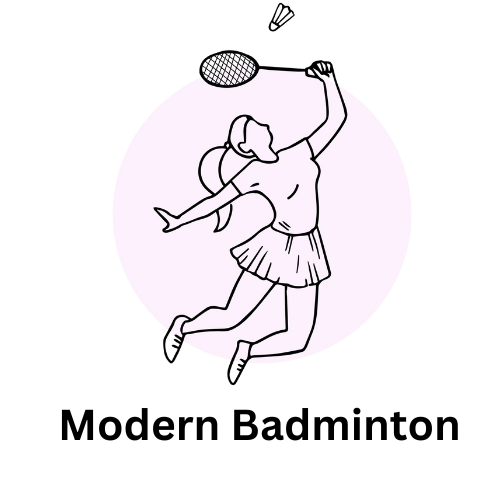
Introduction to Badminton Basics
Badminton is a fun and exciting sport that people of all ages can enjoy. Whether you play it in your backyard or at a professional level, understanding the basics is key to enjoying the game and improving your skills.
- Understanding the game: Badminton is played with a shuttlecock and rackets. The goal is to hit the shuttlecock over the net and into the opponent’s court. Players score points when their opponent fails to return the shuttlecock.
- Importance of mastering badminton fundamentals: Learning the basics, like how to serve and return the shuttlecock, is very important. These skills help you play better and enjoy the game more. Mastering the fundamentals also helps prevent injuries and makes the game more fun.
| Basic Skill | Why It’s Important |
|---|---|
| Serving | Starts the game and can give you an advantage. |
| Returning | Helps keep the game going and score points. |
| Footwork | Allows you to move quickly and reach the shuttlecock. |
Essential Badminton Techniques
Basic Badminton Strokes
Mastering basic badminton strokes is crucial for any player. These strokes help you control the game and outplay your opponent. Let’s look at three essential strokes:
- Clear stroke: The clear stroke is used to send the shuttlecock high and deep into the opponent’s court. This stroke gives you time to get back into position. It is often used to move your opponent to the back of the court.
- Drop shot: The drop shot is a gentle stroke that makes the shuttlecock fall just over the net. This shot is great for catching your opponent off guard and making them rush forward. It requires precision and a soft touch.
- Smash stroke: The smash stroke is a powerful and fast downward shot. It is used to finish rallies and score points. The key to a good smash is timing and strength. It is one of the most exciting shots in badminton.
| Stroke | Purpose | Key Points |
|---|---|---|
| Clear stroke | Send shuttlecock high and deep | Gives time to reposition |
| Drop shot | Make shuttlecock fall just over the net | Requires precision and soft touch |
| Smash stroke | Powerful downward shot | Timing and strength are key |
Understanding these basic strokes will help you become a better player. Practice them regularly to improve your game.
Advanced Badminton Techniques
-
Jump Smash
The jump smash is a powerful shot. It combines a jump with a smash. This makes the shuttlecock go faster and at a steeper angle. To do this, jump high and hit the shuttlecock at the highest point. This shot is great for scoring points quickly.
Key Points Details Power High Angle Steep Difficulty Advanced -
Deceptive Drop Shot
The deceptive drop shot tricks your opponent. It looks like a smash but is a gentle drop. Hold your racket high and swing fast. At the last moment, slow down and gently push the shuttlecock over the net. This makes your opponent move quickly, often causing them to miss.
Key Points Details Deception High Speed Slow Difficulty Advanced -
Net Kill
The net kill is a quick shot. It is used when the shuttlecock is close to the net. Hold your racket high and push the shuttlecock downwards. This shot is fast and hard for your opponent to return. It is best used when your opponent’s return is weak.
Key Points Details Speed Fast Position Close to net Difficulty Intermediate
How to Play Badminton: Rules and Strategies
Understanding Badminton Rules
- Scoring system: In badminton, matches are usually played best out of three games. Each game is played to 21 points. You score a point when you win a rally. If the score reaches 20-20, the game continues until one player or team leads by two points. The maximum score can go up to 30 points.
- Service rules: The serve must be hit below the server’s waist and the racket must be pointing down. The server must stand within the service court. The serve must travel diagonally to the opponent’s service court. If the serve is incorrect, it is called a “fault.”
- Faults and lets: A fault occurs if the shuttlecock lands outside the boundaries, passes through or under the net, or if a player touches the net with their body or racket. A “let” is called when a rally is stopped and replayed, usually due to an unforeseen interruption.
| Rule | Description |
|---|---|
| Scoring System | Play to 21 points, win by 2 points, max score 30 points. |
| Service Rules | Serve below waist, diagonally, within service court. |
| Faults and Lets | Faults: shuttlecock out, net touch. Lets: rally replay. |
Effective Badminton Strategies
-
Positioning on Court
Good positioning is key in badminton. Always stay in the center of your side of the court. This helps you reach the shuttlecock quickly, no matter where it goes.
Here is a simple table to show where to stand:
Situation Position When serving Near the service line When receiving Near the back of the court During a rally Center of the court -
Reading the Opponent
Watch your opponent closely. Notice their strengths and weaknesses. For example, if they often miss shots on their backhand side, aim your shots there.
Here are some tips:
- Observe: Look at their footwork and racket position.
- Predict: Try to guess where they will hit next.
- Adapt: Change your strategy based on their play.
-
Controlling the Pace of the Game
Control the pace to keep your opponent off balance. If they like fast rallies, slow it down. If they prefer slow play, speed it up.
Consider these strategies:
- Vary your shots: Mix up smashes, drops, and clears.
- Change the tempo: Use both fast and slow shots.
- Stay unpredictable: Keep your opponent guessing.
Improving Your Badminton Skills
Badminton Training Tips for Beginners
Improving your badminton skills takes time and effort. Here are some essential tips to help beginners get started:
- Consistent practice: Regular practice is key to getting better at badminton. Try to play at least 2-3 times a week. This helps you build muscle memory and improve your skills over time. Remember, practice makes perfect!
- Physical conditioning: Badminton is a physically demanding sport. To keep up, you need to be in good shape. Focus on exercises that improve your strength, speed, and endurance. Running, jumping rope, and strength training can all help.
- Mastering footwork: Good footwork is crucial in badminton. It helps you move quickly and efficiently around the court. Practice different footwork drills to improve your agility and balance. This will help you reach the shuttlecock faster and make better shots.
By following these tips, beginners can start building a strong foundation in badminton. Consistent practice, physical conditioning, and mastering footwork are all important steps to becoming a better player.
| Tip | Benefit |
|---|---|
| Consistent practice | Builds muscle memory and improves skills |
| Physical conditioning | Improves strength, speed, and endurance |
| Mastering footwork | Enhances agility and balance |
Advanced Badminton Training Techniques
- Shadow BadmintonShadow badminton is a practice where you mimic playing without a shuttlecock. It helps improve footwork and positioning. Imagine you are playing a real game and move as if you are hitting the shuttlecock. This technique helps you become faster and more agile on the court.
- Multi-Shuttle DrillsMulti-shuttle drills involve hitting multiple shuttlecocks in quick succession. This drill improves your reaction time and accuracy. A coach or partner will feed you shuttles rapidly, and you must return them as quickly as possible. This technique is great for building endurance and precision.
- Target PracticeTarget practice involves aiming at specific spots on the court. Place targets or markers in different areas and try to hit them with the shuttlecock. This helps improve your shot accuracy and control. By practicing this regularly, you can learn to place your shots more effectively during a game.
| Technique | Benefits |
|---|---|
| Shadow Badminton | Improves footwork and positioning |
| Multi-Shuttle Drills | Enhances reaction time and accuracy |
| Target Practice | Increases shot accuracy and control |
Conclusion: Mastering Badminton Fundamentals
Mastering the basics of badminton is key to becoming a great player. These fundamentals are the building blocks of your game. Without a strong foundation, it is hard to improve and compete at higher levels.
- Importance of basics: Understanding and practicing the basics, like grip, stance, and footwork, is crucial. These skills help you move efficiently and hit the shuttlecock accurately. Even professional players focus on basics to maintain their skills.
- Continuous learning and practice: Badminton is a sport where you can always learn more. Regular practice helps you improve your techniques and strategies. Watching games, taking lessons, and playing with better players can also help you grow.
Keep in mind, even small improvements in your basic skills can make a big difference in your game. Keep practicing and stay dedicated to mastering the fundamentals. This will set you on the path to becoming a successful badminton player.
| Key Points | Details |
|---|---|
| Importance of Basics | Focus on grip, stance, and footwork to build a strong foundation. |
| Continuous Learning | Regular practice and learning from others help improve your game. |
In summary, mastering badminton fundamentals is essential for anyone who wants to excel in the sport. By focusing on the basics and committing to continuous learning, you can achieve great success on the court.
